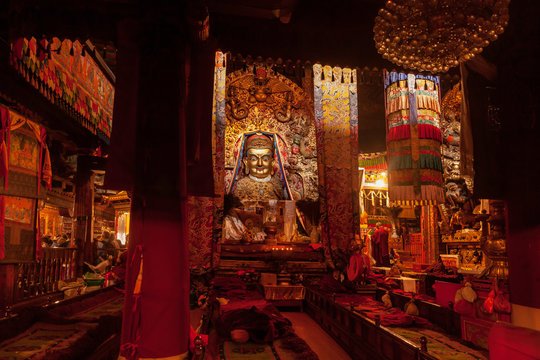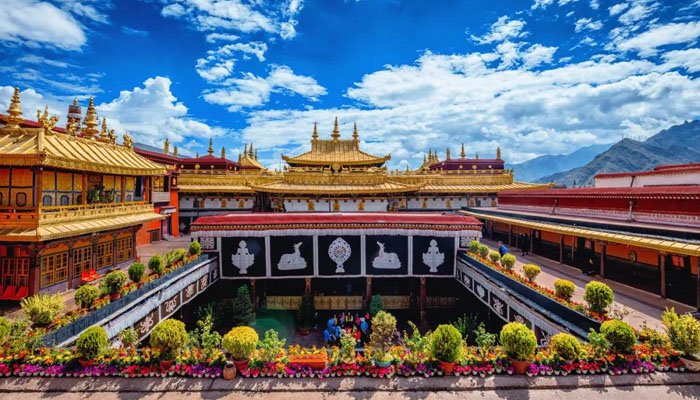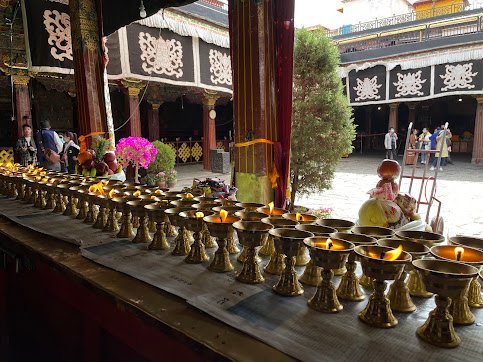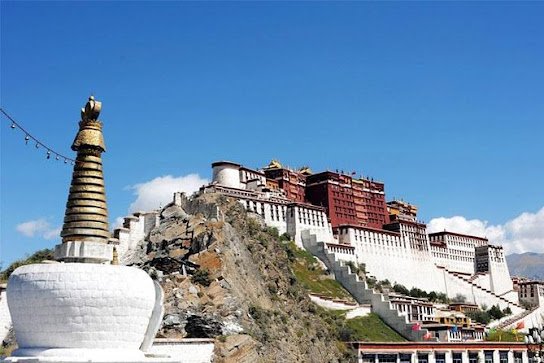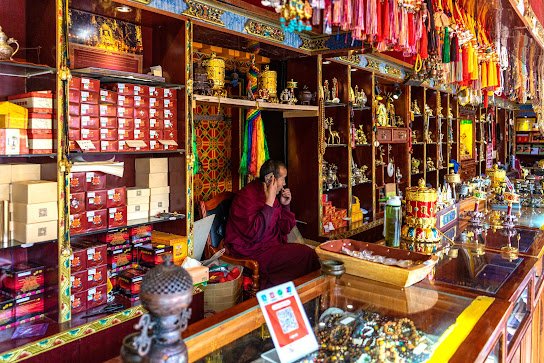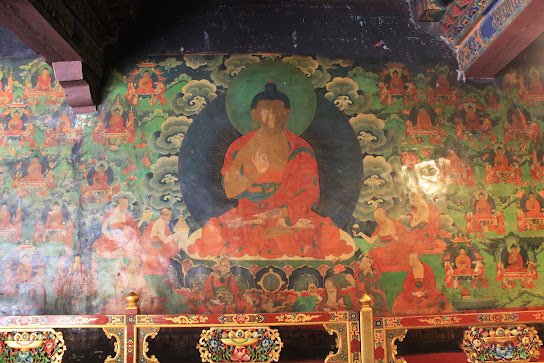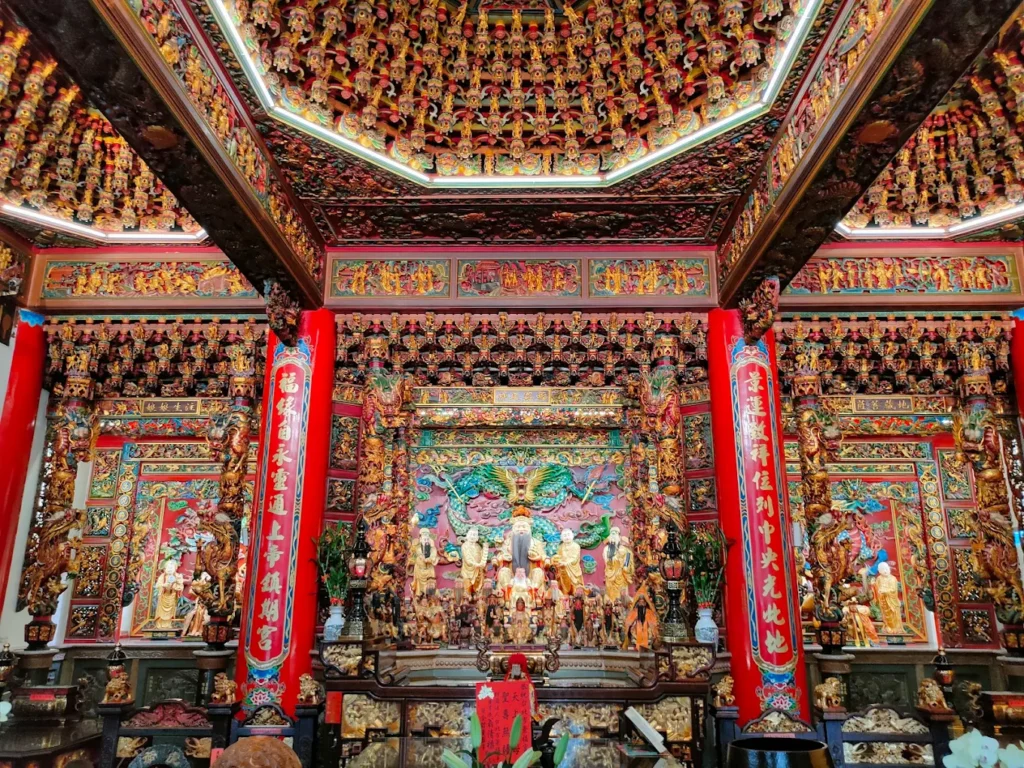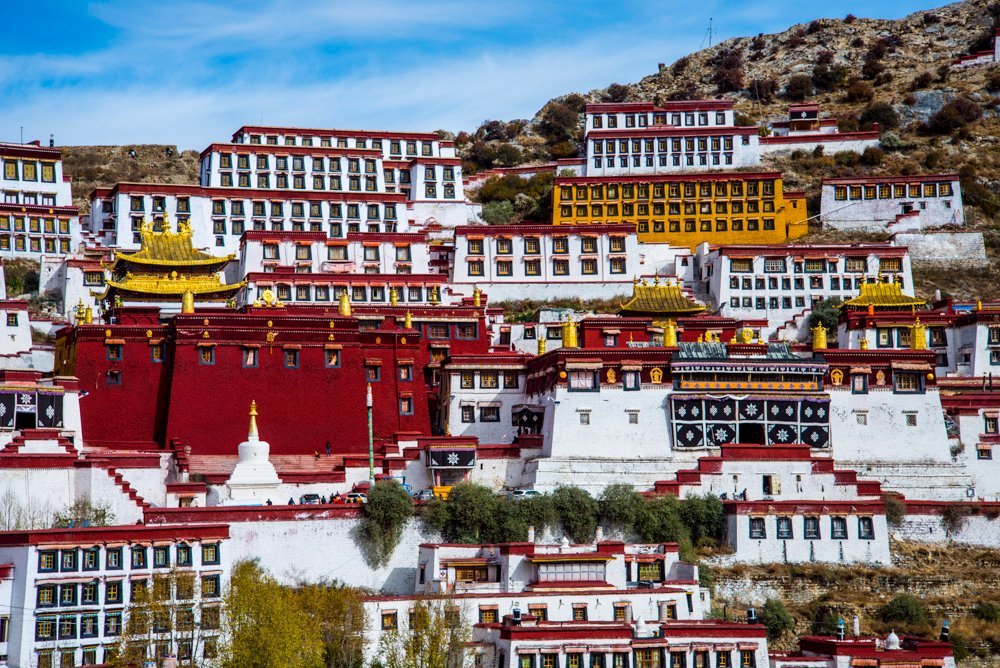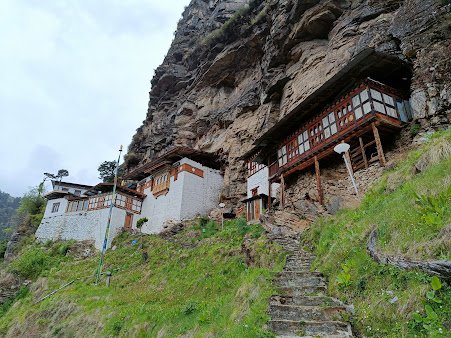Jokhang Temple: The Spiritual Heart of Tibet
Jokhang Temple’s Sacred Radiance
Nestled in the heart of Lhasa’s old city, Jokhang Temple is the spiritual epicenter of Tibetan Buddhism, radiating reverence. Its golden roof and ancient relics draw pilgrims and travelers seeking profound cultural insight. This sacred site, revered across all Tibetan Buddhist sects, invites exploration of Tibet’s deep spiritual heritage.
Essence of Jokhang Temple
- Spiritual Core: Tibet’s holiest temple, central to Buddhist pilgrimage and devotion.
- Buddhist Sanctum: Houses the revered Jowo Shakyamuni, a life-sized statue of the young Buddha.
- Cultural Hub: A focal point for Lhasa’s religious and communal life.
Historical Legacy
- Founded in 647 AD: Built by King Songtsen Gampo to enshrine the Jowo Shakyamuni statue.
- UNESCO Heritage: Recognized as part of Lhasa’s historic ensemble, preserving its ancient glory.
- Enduring Faith: Survived centuries of turmoil, restored to remain a pilgrimage beacon.
Cultural Distinction
- Universal Reverence: Honored by all Tibetan Buddhist sects, a rare unifying sanctuary.
- Pilgrim Magnet: Draws devotees for prostrations and circumambulations around its sacred halls.
- Barkhor Circuit: Anchors the vibrant pilgrimage path encircling the temple.
Architectural Splendor
Jokhang Temple’s architecture blends Tibetan, Han, and Nepalese styles, creating a mesmerizing visual tapestry. Its golden roof and intricate interiors captivate visitors. The temple’s design embodies a cosmic mandala, reflecting Buddhist cosmology.
Distinctive Design
- Eclectic Fusion: Combines Tibetan flat roofs, Han upturned eaves, and Nepalese carvings.
- Golden Roof: Shimmering tiles symbolize enlightenment, visible across Lhasa.
- Mandala Layout: Structured to mirror the universe, guiding spiritual contemplation.
Signature Structures
- Main Hall (Tsuglhakhang): Houses the Jowo Shakyamuni statue, adorned with silk and jewels.
- Butter Lamp Chamber: Thousands of flickering lamps create a warm, sacred glow.
- Roof Terrace: Offers panoramic views of Lhasa and the surrounding Himalayas.
Artisanal Craftsmanship
- Wooden Carvings: Intricate beams depict Buddhist tales and deities.
- Murals: Vibrant wall paintings narrate the life of Buddha and Tibetan history.
- Bronze Relics: Ornate statues and ritual items showcase ancient artistry.
Sacred Practices in Devotion
Jokhang Temple’s rituals pulse with devotion, amplified by its spiritual significance. Daily practices and unique ceremonies immerse visitors in Tibetan Buddhist traditions. Festivals transform the temple into a vibrant hub of faith and celebration.
Sacred Daily Rites
- Prostrations: Pilgrims perform full-body bows before the Jowo Shakyamuni statue.
- Butter Lamp Offerings: Visitors light lamps to honor Buddha and seek blessings.
- Chanting Sessions: Monks recite sutras, their voices echoing through the halls.
Unique Spiritual Practices
- Barkhor Kora: Devotees circumambulate the temple clockwise, spinning prayer wheels.
- Pilgrim Offerings: Scarves (khatas) and butter are presented at altars for merit.
- Monastic Debates: Occasional scholarly discussions sharpen Buddhist understanding.
Vibrant Festival Traditions
- Great Prayer Festival (Monlam): Thousands gather for prayers and butter lamp displays.
- Losar (Tibetan New Year): Festive rituals and dances mark renewal.
- Saga Dawa: Celebrates Buddha’s birth with processions and vegetarian feasts.
Visiting Jokhang Temple
Jokhang Temple in Lhasa’s Barkhor area is accessible yet demands respect for its sacred protocols. Practical details ensure a smooth visit for tourists and cultural enthusiasts. Adhering to etiquette enhances the spiritual experience.
Getting There
- Address: Barkhor Street, Lhasa, Tibet Autonomous Region, China.
- Transport Options:
- Bus: Routes to Barkhor Square; walk 200 meters to the temple entrance.
- Taxi: A short ride from Potala Palace; available via local apps.
- Walking: From Lhasa’s city center, a 10-minute stroll through Barkhor streets.
- Landmark Note: Look for the temple’s golden roof and bustling pilgrim crowds.
Visiting Hours and Entry
- Hours: Open daily, 8:00 AM–5:00 PM; morning visits recommended for rituals.
- Entry: Free for worshippers; tourists require a Tibet Travel Permit.
- Etiquette:
- Wear modest clothing (cover shoulders and knees); avoid hats inside.
- Photography banned inside the main hall; permitted on the roof.
- Walk clockwise around the temple; offer only vegetarian items (butter, khatas).
Accessibility and Safety
- Accessibility: Limited; stone steps and narrow halls, no ramps; mobility aids challenging.
- Guides: Local Tibetan guides offer tours in English with prior booking.
- Safety Tips:
- Beware of crowds during festivals; keep valuables secure.
- Stay on marked paths to avoid uneven surfaces.
- Emergency contacts: Lhasa Police (110), Medical Assistance (120).
- Amenities: Nearby Barkhor Street shops, restrooms, and tea houses.
